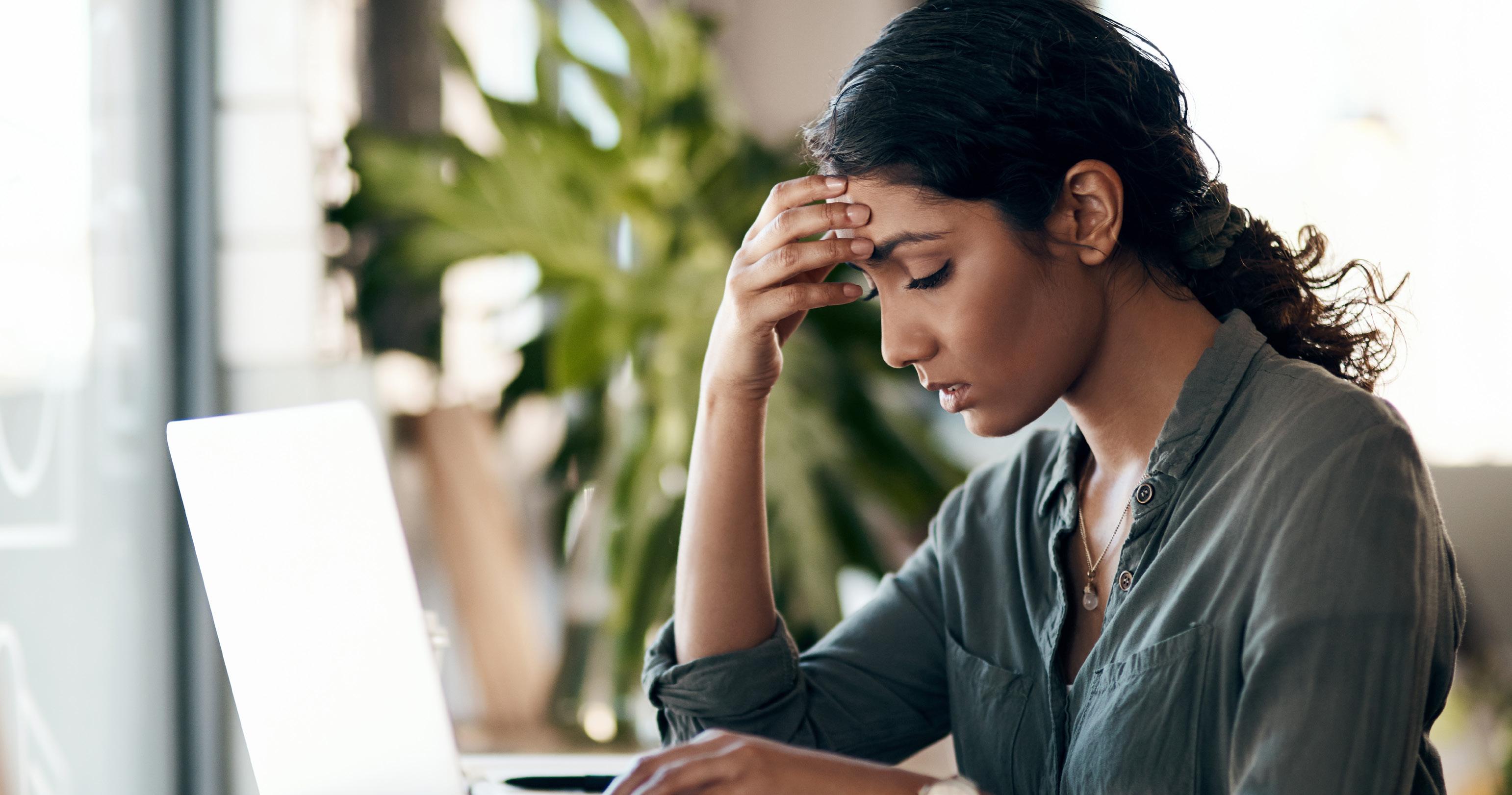
4 minute read
Breaking free from burnout
Still feeling exhausted after lockdown? You could be suffering from burnout. Here’s how to recognise it and overcome it.
With the restrictions of lockdown behind us and the holiday season upon us, it’s a time for celebration and rejuvenation.
Advertisement
So why, even with life returning to some semblance of normalcy, do many of us feel exhausted?
After the nearly two-year rollercoaster that has been the coronavirus pandemic, you could be suffering the lingering effects of burnout.
“Being ‘burnt out’ is a popular description for the effects of chronic stress that have been unaddressed and inadequately managed,” said clinical psychologist Dr Carly Ymer, of Camberwell’s Being Well Clinic.
– Dr Carly Ymer
According to Dr Ymer, the signs of burnout can range from poor sleep – difficulty either falling or staying asleep – to changes in appetite, mood changes such as irritability and dysphoria, social withdrawal, and general levels of both physical and cognitive fatigue.
“Burnout can make it challenging to remain focused on your daily living and jobs, reduces feelings of satisfaction and connection, and is often described as ‘everything feels just too hard’,” she said.
Considering Melbourne has the unenviable title of the world’s most locked down city, it comes as no surprise the impacts of the pandemic have left many Melburnians feeling stressed, isolated and drained.
Dr Ymer said the chronic stress of multiple, lengthy hard lockdowns has pushed our adaptive coping mechanisms to their limits.
“Although we are generally quite adaptive to daily stress and elevated pressures in daily lives, we aren’t meant to experience these long-term like we have in the lockdowns of COVID-19,” she said.
“As such our biological, emotional, cognitive and social resources have run dry and we aren’t getting refuelled by our typical pleasurable activities and experiences such as group fitness, family gatherings, dinner with friends, weekend getaways, and even simple things like brunches out and retail therapy.”
The sudden restrictions on our movement, the isolation of working or learning from home, and the shrinking of our social circles also took a toll.
“The effects of being confined to our homes, where we now sleep, eat, cook, clean, work, school, exercise and socialise all in the one place are significant and have certainly led to high tensions, strained relationships, loss of novelty and feelings of being trapped,” Dr Ymer said.
“Add the secondary effects of lockdowns like loss of income, loneliness, difficulties or inadequacies of remote learning and working, and changed relationships – and instead of feeling invested, we feel detached and despondent.”
Overcoming burnout
The first step to overcoming burnout is to recognise it and how it is affecting you.
You may be able to do this yourself, or with the help of your GP and a psychologist.
Although burnout is common, it’s important to note that it is not recognised as a standalone clinical diagnosis and can often go undiagnosed or misdiagnosed for other mental health issues like depression.
“Health professionals do not have burnout included in their education and so are limited in their capacity to diagnose and treat,” said UNSW Scientia Professor Gordon Parker.
“Thus, many people get the wrong diagnosis, principally depression, and then the wrong treatment.”
But this is changing. Professor Parker, founder of the Black Dog Institute, is one of Australia’s leading researchers of burnout and is the lead author of the new book Burnout: A guide to identifying burnout and pathways to recovery.
His work is helping to uncover the biology of burnout and to inform strategies for recovery.
The good news is it’s possible to recover, even from extreme burnout.
“Identify what you can change and accept what you can’t so that your efforts and strategies are useful, effective and helpful,” Dr Ymer said.
“Once you have recognised the signs and symptoms of your burnout make a list of primary, secondary and tertiary strategies to manage and heal.”
The first strategy is to focus on the basics of your health and wellbeing by establishing routines that are different from those you had in lockdown.
This can be as simple as changing up what you eat, like swapping heavier food for fresh salads and seafood, to rearranging the furniture in your house, introducing indoor plants, and diffusing appealing scents like bergamot and citrus.
“The brain responds so well to change and making these simple changes can feel so refreshing,” she said.
Secondly, focus your efforts on reinvigorating things like relationships, personal interests, and hobbies.
With Christmas just around the corner, you could start a new creative project like making gifts and cards rather than buying them. Or give the screen time a rest and try listening to podcasts or reading books.
“Reach out to an old friend you haven’t seen much of through lockdowns and find a way to connect. Hearing from someone different, new stories, experiences and sharing your own with someone different from your inner circle can stimulate great feeling chemicals in the brain,” Dr Ymer said.
The third strategy for healing from burnout is reconnecting with things that bring you meaning and purpose, and allowing yourself to feel optimistic about the future.
Start to think about things you are excited to do again like travel, hosting family gatherings, weekends at the beach and adventurous experiences.
“The brain loves to visualise and fantasise about pleasurable events, activities and memories,” Dr Ymer said.
“You’ll feel a refreshing rush of dopamine, serotonin and oxytocin throughout your body. Start talking to family, friends and colleagues about what you’re excited about and get them talking about theirs too.
“Shared hope and joy is a magical feeling that brings us healing chemicals in the body and sparks fresh new feelings.”






